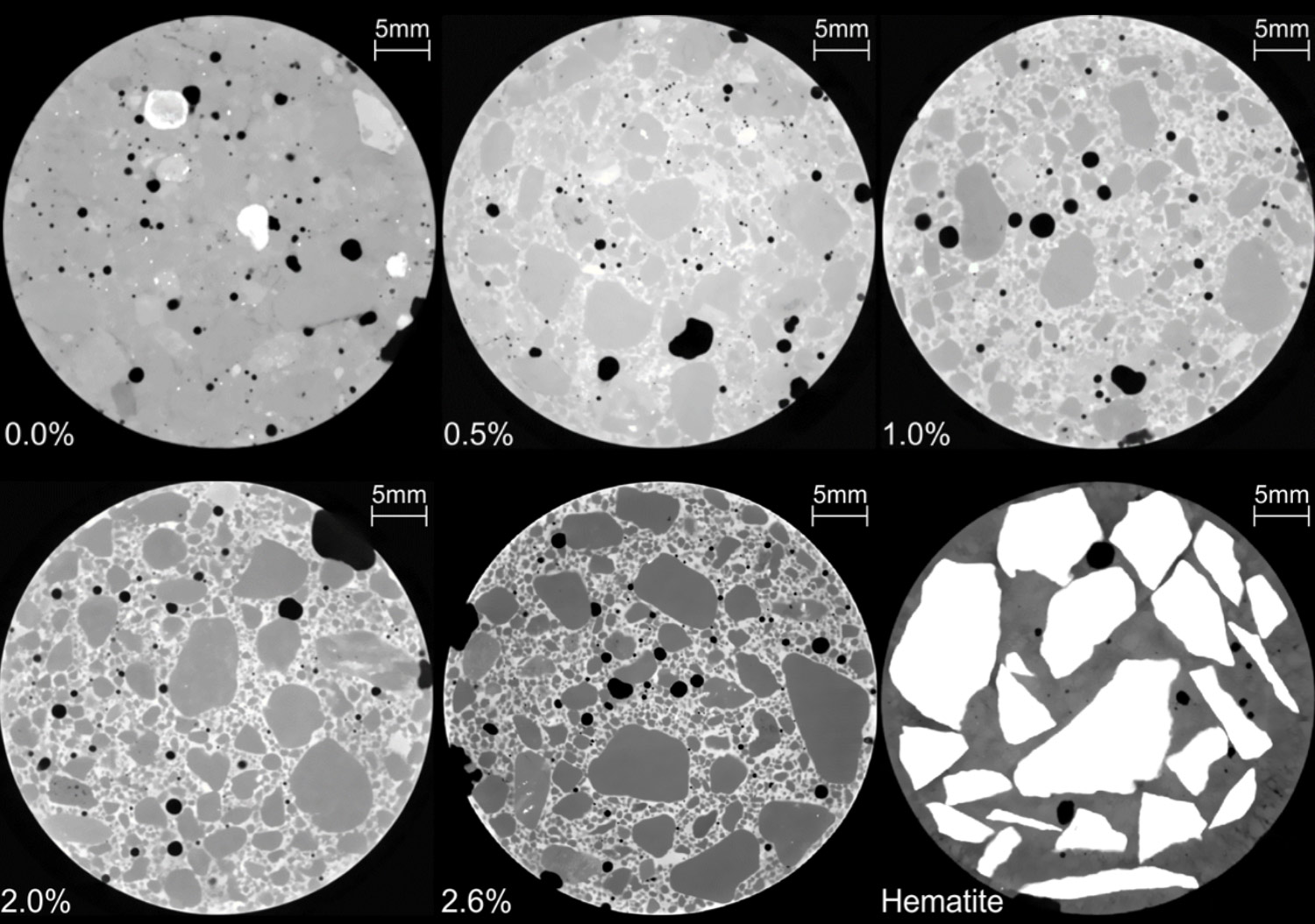Imaging of concrete
Transport processes in concrete, such as chloride diffusion, and their interaction with damage and cracking are heavily influenced by the mesostructural details. At the mesoscale, concrete is considered composed of three solid phases, i.e. the aggregates, a cementitious binding matrix and an interfacial transition zone between the two, as well as pores and air voids. The recent improvements of X-ray computed tomography enable the direct observation of the mesostructure. However, segmentation of the data into distinct phases is often prevented by the limited contrast between aggregates and mortar matrix of similar chemical composition.
Aim of this project, carried out in collaboration with external page NIST and other colleagues at the external page TU Braunschweig, is to develop an experimental procedure to amend the lack of contrast between binding matrix and aggregates. The idea is to replace a limited amount of the finer sand in the mixture with baryte powder. Chemical and mechanical tests are performed to quantify the influence of the contrast enhancer on the properties of the mixture. The results show that a very limited amount of baryte is irrelevant for the performance of the material and enables a semi-automatic segmentation of the images. This ultimately enables the generation of meshes that can be used in numerical computations.
Funding:
external page ERC Starting Researcher Grant “Mechanical modeling of interfaces in advanced materials and structures” (2011-2016).
external page DFG external page Research Training Group 2075 “Modelling the constitutive evolution of building materials and structures with respect to aging” (2015-2019).
external page DFG Priority Program SPP2020 “Cyclic deterioration of High-Performance Concrete in an experimental-virtual lab” (2018-2020).

